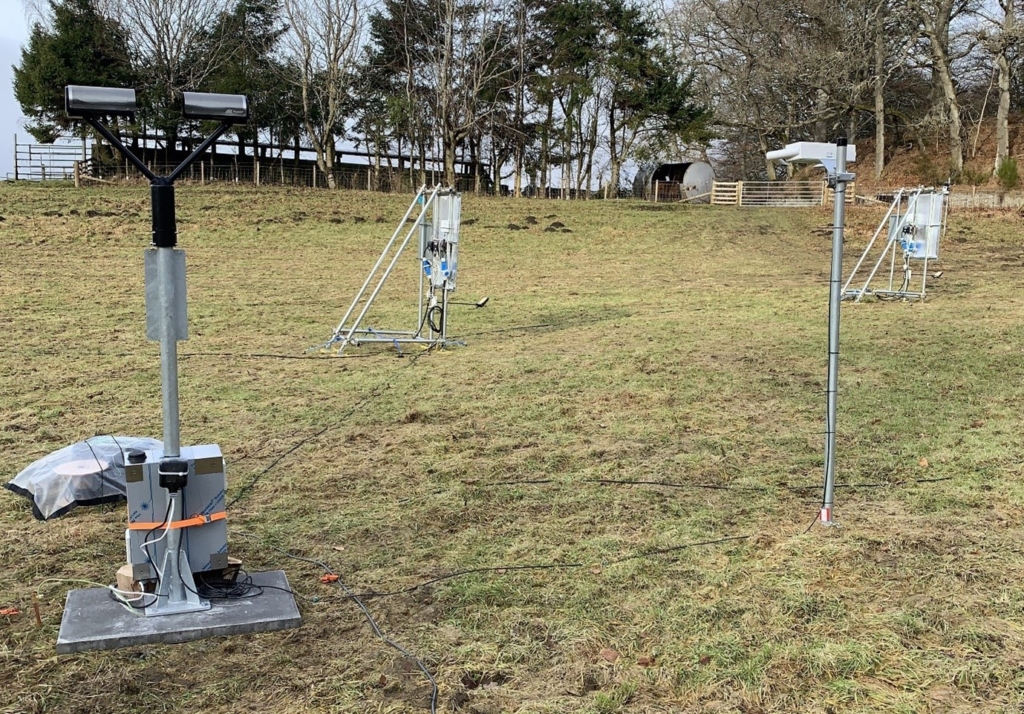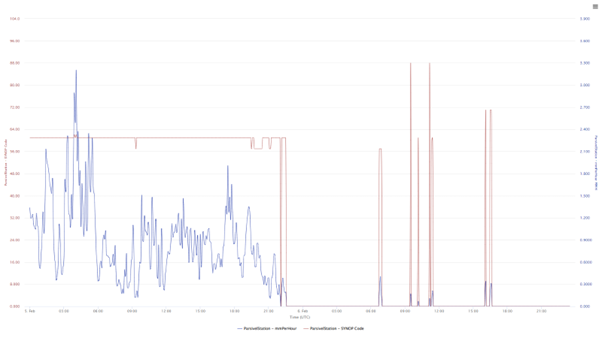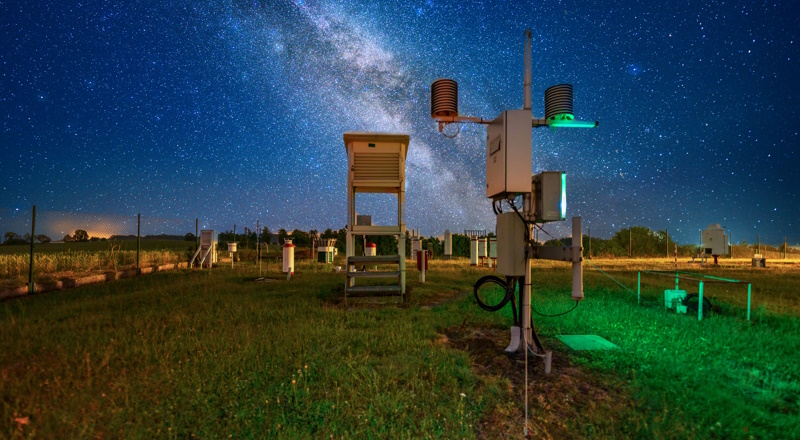Modelling, Simulation and Testing of automotive perception sensors
Sim4CAMSens is a CCAV funded project working on methods to quantify and simulate camera, radar and lidar sensor performance under all conditions.

Weather measurements for the winter test campaign
When designing the Sim4CAMSens Winter testing campaign, as with any real world test work, one of the key concerns was to minimise the number of variables that could impact the experiments. If you want to read the background on this winter test programme then see our previous posts: Introducing the Sim4CAMSens project & Why are we testing perception sensors in winter conditions
Measuring and quantifying the weather is one of the biggest challenges in this programme because of the huge range of uncertainty associated with any weather measurement and the large time and spatial variations that can occur even over a relatively short period and relatively small test site. The suite of weather instruments covers the basics such as temperature, pressure, humidity, rain rate and these are supported by more specialist instruments including a disdrometer and present weather sensor.
A disdrometer is an instrument which is used to measure the drop size distribution and velocity of precipitation in any form – rain, snow, hail. The particular disdrometer that we are using for this test campaign also classifies the precipitation into 32 classes such as light/medium/heavy rain, light hail, drizzle, snow. From the raw data collected it can also calculate the type, amount, intensity and kinetic energy of the precipitation.
To complement the disdrometer we also have a present weather sensor and both these sensors can be seen in Figure 1. The present weather sensor measures the visibility up to 2000m and allows us to cover the foggy weather conditions with accurate measurements of the meteorological optical range – a formal definition of visibility.

Figure 1: Disdrometer and present weather sensor as installed on the test site with some of the sensor targets visible in the background
With this combination of weather sensors we will build up a detailed picture of the weather conditions at the test site, although due to the uncertainties associated with weather, the measurements are only 100% correct for the positions of the weather sensors themselves at the moment the measurement is taken. However, they are indicative of the conditions across the whole test site. To minimise the effects of time variation we are sampling all the weather sensors at a high rate which should allow us to determine if the conditions are relatively stable during the periods of interest or subject to high variability. Figure 2 shows the rain rate and precipitation classification from the weather instruments over a 2 day period. From this chart we can see that there was a prolonged period of light rain, occasionally reducing to drizzle, on day 1 and on the second day there were short periods of drizzle, rain, hail and snow.

Figure 2: Rain rate in mm/hour and precipitation classification code. 57 = drizzle, 61 = light rain, 88 = moderate/heavy hail, 71 = light snow.
With the weather instrumentation installed at the test site we can build up a good picture of the weather conditions that the sensors are perceiving. This information can then be used to start correlating the changes in sensor performance with the specific weather conditions. Once a correlation is identified, sensor models can be used to predict the behaviour and expected output of the sensors, and the complete AV pipeline (sense-perceive-plan-control) can be replicated and developed using the simulator to ensure that the weather conditions are accurately accounted for and have the appropriate effect on all the perception sensors. These weather aware sensor models will enable the virtual testing of AVs under all weather conditions.
Please get in touch if you have any questions or have got a topic in mind that you would like us to write about. You can submit your questions / topics via: Tech Blog Questions / Topic Suggestion
Project Updates
All the latest news, updates and information from our project partners.
Perception sensors under test
When developing the winter test programme, a key consideration was to make sure that we could capture data from a ...
Design of the test range and targets
When designing the test range we had to consider a number of factors that influenced the selection of the location, ...
Weather measurements for the winter test campaign
When designing the Sim4CAMSens Winter testing campaign, as with any real world test work, one of the key concerns ...


